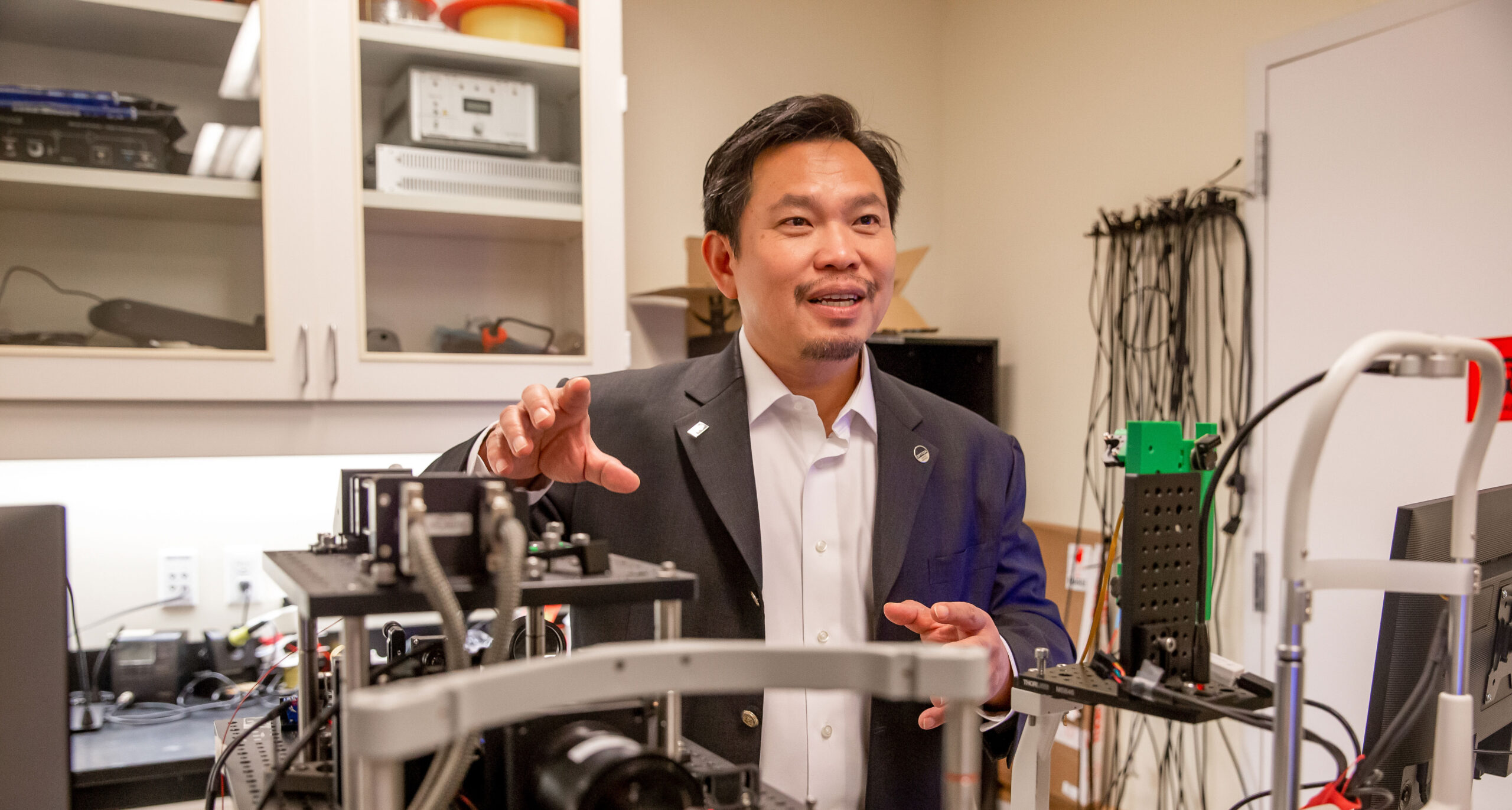Mark Pennesi, MD, PhD, is chief of the OHSU Casey Eye Institute’s Paul H. Casey Ophthalmic Genetics Division and also the Kenneth C. Swan Endowed Professor of Ophthalmology. Dr. Pennesi is one of the many researchers at the OHSU Casey Eye Institute working to discover life-changing breakthroughs to improve the lives of people everywhere — including ending blindness.
In February 2020, you led the team that performed the first-ever gene-editing procedure on a living human. The BRILLIANCE study used the gene-editing technology CRISPR to repair mutations in the gene that causes a rare form of inherited blindness called Leber congenital amaurosis type 10. The results were promising. What does this breakthrough mean?
The results from the trial are still preliminary, but encouraging. We are seeing improvement in vision in a small number of severely sight-impaired patients. Such findings suggest that gene editing can be effective at correcting genetic mutations inside the body. While we are treating a rare eye disease in this trial, gene editing technology could be applied to many other genetic diseases in the musculoskeletal or central nervous systems.
What is the difference between gene editing and gene replacement therapy?
We can think of a gene like a recipe book that tells a cell how to make a certain protein. Mutations would be errors in that recipe book that lead to errors in creating the protein. With gene replacement therapy, we are putting a new copy of the gene into the cell to make up for the defective gene. With gene editing we are fixing the problem in the original recipe, essentially editing the error like we would edit a paper or a letter.
Casey is conducting more ocular gene therapy clinical trials than any other institution in the world. What are some of the more promising studies we should know about?
There are many exciting gene therapy trials in the pipeline. Many of these are for other forms of Leber Congenital Amaurosis, which causes severe and early vision loss. We are also studying other genetic eye diseases that impact patients later in life, such as X-linked Retinitis Pigmentosa and Usher Syndrome (a form of retinitis pigmentosa that also causes hearing loss).
What do patients say a successful gene therapy procedure?
We have seen some amazing improvements with patients treated with voretigene neparvovec (Luxturna). Many patients have experienced a profound improvement in their ability to see in dim light conditions. Several patients have commented to me how they were able to see the stars in the sky for the first time. Others have noted better color vision, commented that colors appear much more vibrant and easier to identify.




